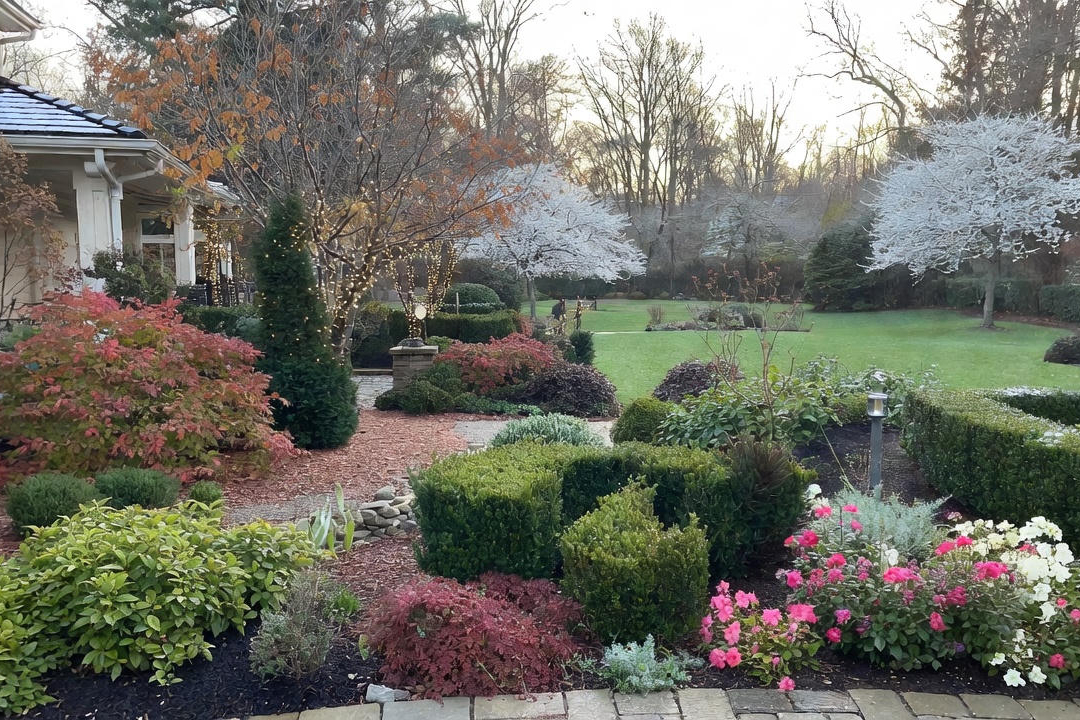
If you are taking on a landscape design project, it’s important to be aware of different terms and yard features that will help you develop a good plan and ensure the end product that you are envisioning. Knowing these things will also help in researching different landscapes and yard setups that you may want to take inspiration from or even copy.
Here are some definitions and yard features to be aware of:
Landscape Design
Arbor vienna: Arbors are a terrific presentation for an entrance into a yard or small lounging area. What better way to do that than to have some vines growing all around it, making it a magical transition to your yard to your happy place.
Augmented reality: A technology that superimposes a computer-generated image on a user's view of the real world, thus providing a composite view.
Birdhouse: A box, typically made to resemble a house, provided for a bird to make its nest in.
Bridge: A build over a natural, or manmade stream of flowing water on your property. You can also use the shade under a bridge to grow some thriving shade perennials to give life underneath it.
Fencing: A barrier, railing, or other upright structure, typically of wood or wire, enclosing an area of ground to mark a boundary, control access, or prevent escape. Types of fencing includes aluminum, wood, PVC, wrought iron, vinyl, chain link, electric, bamboo, and farm.
Fieldstone: An unaltered form as taken from the field.
Firepit: A pit dug into the ground or a freestanding metal vessel, in which a contained outdoor fire is made.
Gazebo: A roofed structure that offers an open view of the surrounding area, typically used for relaxation or entertainment.
Grading: The sculpting or leveling of land, intended to prepare outdoor living spaces for elements like plants, hardscaping, paths, patios, stairs, pools, and more.
Hardscape: The man-made features used in landscape architecture, e.g. paths or walls, as contrasted with vegetation.
Landscape rocks: A decorative yard feature. Different types of rocks include granite, boulder, and sandstone.
Lighting: Generally refers to any hardwired, low-voltage or solar powered lighting that is used for illuminating outdoor areas.
Pergola: An archway in a garden or park consisting of a framework covered with trained climbing or trailing plants. Some types of pergolas include Dome, Cherry, Distressed Flat, Eight-Legged, Narrow Pine, Round Hexagonal, and Shade.
Portico: A structure consisting of a roof supported by columns at regular intervals, typically attached as a porch to a building.
Retention wall: A structure that retains or holds back any material and prevents it from sliding or eroding away. It is designed to resist the pressure of the material that it is holding back.
Shade sail: A fancy curved frame adds to a fancy event area, or even your backyard. Be sure to tie down the sail very well in case it becomes very windy.
Veranda: A roofed platform along the outside of a house, level with the ground floor.
Water fountain: A device or structure that sends a stream of water into the air in a garden.
Xeriscaping: A type of landscaping in a style which requires little or no irrigation.
Garden
Soil test: The analysis of a soil sample to determine nutrient content, composition, and other characteristics such as the acidity or pH level.
Raised bed garden: A form of gardening in which the soil is formed in beds, which can be of any length or shape, but are usually about 3-4 feet wide. They are often the foundation of square-foot gardening, a method of planting plants in grids.
Plants
Agriculture: The science or practice of farming, including cultivation of the soil for the growing of crops and the rearing of animals to provide food, wool, and other products.
Cactus: A succulent plant with a thick, fleshy stem that typically bears spines, lacks leaves, and has brilliantly colored flowers. Cacti are native to arid regions of the New World and are cultivated elsewhere, especially as houseplants.
Ground cover: Low-growing, spreading plants that help to stop weeds from growing.
Herbs: Any plant with leaves, seeds, or flowers used for flavoring, food, medicine, or perfume.
Shrubs: Flowering, evergreen, traditional, classic flowering, drought tolerant.
Softscape: The live horticultural elements of a landscape. Softscaping can include flowers, plants, shrubs, trees, flower beds, and duties like weed/nuisance management, grading, planting, mowing, trimming, aerating, spraying, and digging for everything from plants and shrubs to flower beds.
Trees: Types of trees that go well in a yard include Evergreen, Palm, Flowering, Deciduous, and Fruit.
Flowers
Annuals: Annual plants are plants with a life cycle that lasts only one year. They grow from seed, bloom, produce seeds, and die in one growing season. They then need to be replanted each spring. Most annuals bloom for a long time.
Perennials: Small flowering plants that grow and bloom over the spring and summer, die back every autumn and winter, and then return in the spring from their rootstock. There are different perennials for the sun and shade, as well as perennial vines and perennial grass.
Beds: a garden plot in which flowers are grown. Types of beds include Focal Point, Pansy, and Perennial beds.
For more definitions and yard features, check out iScape’s database on the app. Upload an image, click the + button, scroll through all of the categories, and tap any feature to get a full definition or more information to use when designing.
Not an iScape user? Download iScape now and transform your outdoor living space. So simple. So powerful. iScape it!





.jpg)
